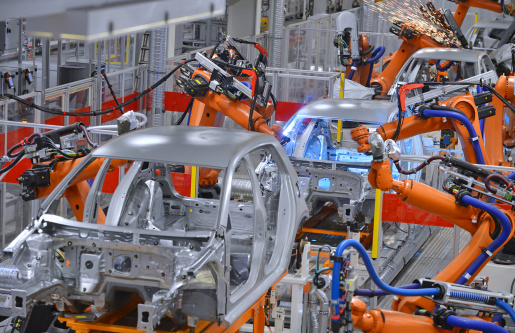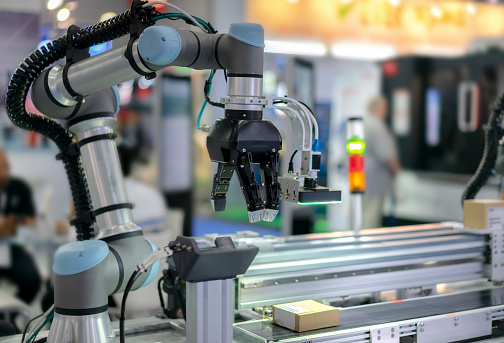Businesses today are looking for ways to Robotic Processing Automation repetitive tasks in order to improve efficiency and cut costs. Robotic process automation (RPA) is one option that is gaining popularity. In this article, we’ll take a close look at what RPA is and how it works.
RPA is a type of software that can be configured to automate certain tasks. For example, an RPA software bot can be programmed to log into a website, extract data, and enter it into a spreadsheet. This can free up employees from having to perform these tedious tasks themselves.
Robotic process automation
Robotic process automation, or RPA, is the use of software bots to automate repetitive, manual tasks. This can include anything from data entry and transcription to more complex processes like claim processing or customer service.

The goal of RPA is to free up human employees from mundane, repetitive tasks so they can focus on higher-level work. In many cases, RPA can also improve accuracy and efficiency while reducing costs.
If your business is considering implementing RPA, there are a few things you should keep in mind.
First, RPA is not a one-size-fits-all solution. You’ll need to carefully select the processes you want to automate and make sure they’re well suited for automation.
Second, RPA requires significant investment in both software and hardware.
Finally, you’ll need to have staff in place to manage and monitor your bots.
With that said, RPA can be a powerful tool for businesses that want to streamline their operations and improve their bottom line. If you think RPA could be a good fit for your company, talk to an expert to learn more.
How does robotic process automation work?
Robotic process automation is a technology that allows software robots to mimic human actions to automate repetitive, rule-based tasks. RPA software bots can work across any application or system, just like a human user, and can be deployed quickly and easily without any need for coding or scripting.
RPA is often used to automate high-volume, repeatable tasks that are otherwise time-consuming and error-prone when done manually, such as data entry, form filling, data mining, web scraping, and more. By automating these tasks, businesses can achieve significant efficiency gains and cost savings.
There are many different RPA software solutions on the market today, each with its own strengths and weaknesses. When choosing an RPA solution for your business, it’s important to carefully consider your needs and objectives to find the best fit.
The benefits of robotic process automation
Robotic process automation, or RPA, is an exciting new technology that can help businesses automate repetitive tasks and processes. RPA can help improve efficiency and accuracy, freeing up employees to focus on more value-added activities.
There are many potential benefits of RPA, including:
- Increased efficiency and accuracy: By automating repetitive tasks and processes, businesses can achieve increased efficiency and accuracy. This can result in reduced costs and improved productivity.
- Greater flexibility: RPA can be deployed quickly and easily, providing businesses with greater flexibility to respond to changing needs.
- Improved customer service: By automating tasks such as data entry and customer correspondence, businesses can improve customer service levels.
- Reduced risks: Automating manual tasks can help reduce the risk of human error.
- Enhanced compliance: Automating processes can help ensure compliance with regulatory requirements.
If you’re considering implementing RPA in your business, it’s important to weigh the potential benefits against the costs and risks involved. RPA is a relatively new technology, and there is still some uncertainty about its long-term efficacy. However, the potential benefits of RPA are significant, and businesses that adopt this technology early may be well positioned to reap the rewards.
The challenges of robotic process automation
The adoption of robotic process automation (RPA) is sometimes hampered by misconceptions about the technology. One common misunderstanding is that RPA is only suitable for simple, repetitive tasks. In reality, RPA can be used for complex processes that require significant human intervention.
Another challenge is that RPA can be difficult to implement. Organizations need to carefully consider which processes are candidates for automation and ensure that they have the right infrastructure in place. They also need to consider the potential impact of RPA on their workforce and plan for how employees will be redeployed to other tasks.
Finally, it’s important to remember that RPA is not a silver bullet. It should be used as part of a broader digital transformation strategy. When used correctly, however, RPA can be a powerful tool for reducing costs, increasing efficiency, and improving quality.
How to implement RPA?
There are many ways to implement robotic process automation (RPA), but the most important thing is to ensure that the technology is well suited to your company’s needs.
Here are four key considerations for implementing RPA:
- Define the business process you want to automate.
- Assess whether the process can be automated using existing software or if custom software needs to be developed.
- Select the RPA software that best meets your company’s needs.
- Train employees on how to use the new software and monitor the process to ensure it is working as intended.
Conclusion
Robotic process automation (RPA) is an exciting new technology that has the potential to revolutionize the way businesses operate. By automating repetitive and time-consuming tasks, RPA can help businesses improve efficiency and productivity, freeing up employees to focus on more value-added activities. If you’re considering implementing RPA in your business, be sure to partner with a reputable provider who can help you get the most out of this transformative technology.

Hi, my name is Kevin Moore. I was born in San Diego, CA and studied at the University of San Diego. I am passionate about sharing my knowledge with interested people and have years of experience in the field of business, health . information technology.










